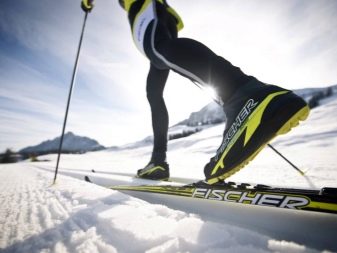How to choose cross-country ski poles?
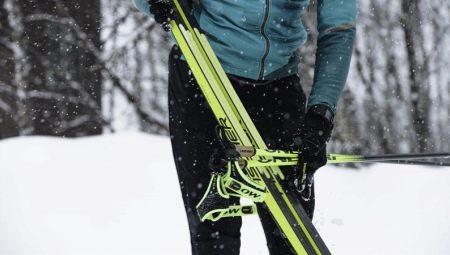
Skiing is a popular pastime in winter. To have fun and avoid injury, you need to choose the right equipment. Professionals and hobbyists alike need to know how to choose cross-country ski poles.

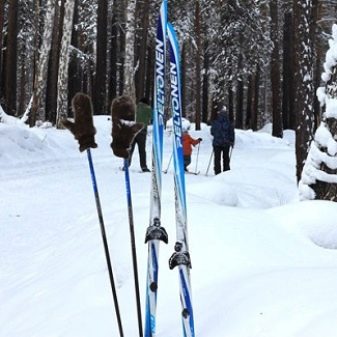
Design features
Ski poles are not easy to find. On the first models, they had to be held by the shaft, but later a handle appeared. Now it has become lightweight and comfortable. Human efforts are directed directly to the rod. Engineers are working to reduce the thermal conductivity of the handle, but there is no solution yet. The most popular material for crafting is cork. It has a high coefficient of adhesion.
The handles differ in the shape of the grip, inclination. A lanyard or a loop for a hand is of the "trap" type - it holds the stick well, helps to master the rolling technique correctly, that is, to release the stick at the last repulsion phase. The "strap" type is designed for leisurely riding of a walking type. Some lanyards have such unique design features that patents have been issued for them.

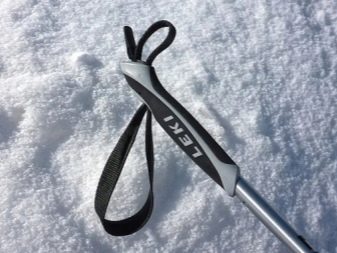
Large rings have not been used as a support for a long time. Modern sticks are equipped with a kind of "paws". Snow should not adhere to such a structure, which adds weight, they cannot provoke slippage.
The shank is made of composite materials. This is how flexibility, lightness, and structural strength are achieved. Manufacturing technologies are patented. Cross-country ski poles are just as important as other parts. The comfort of winter entertainment, the absence of injuries during falls depends on their correct choice.


Manufacturing materials
Many characteristics of this piece of equipment depend on the material of the ski pole. It is important to give it strength, light weight, good wear resistance. These qualities depend on the composition.
Carbon
The best material for the experienced skier is carbon. Athletes take such sticks to major important competitions. Few all-carbon models add carbon fiber or fiberglass to reduce the cost.
Advantages of carbon cross-country ski poles:
- lungs;
- high strength;
- good rigidity;
- high level of wear resistance.
Disadvantages of carbon poles:
- high price;
- the content of impurities in most models;
- low resistance to side impacts;
- high conductivity of cold, that is, hands will quickly freeze;
- significant sensitivity of shocks and impacts.
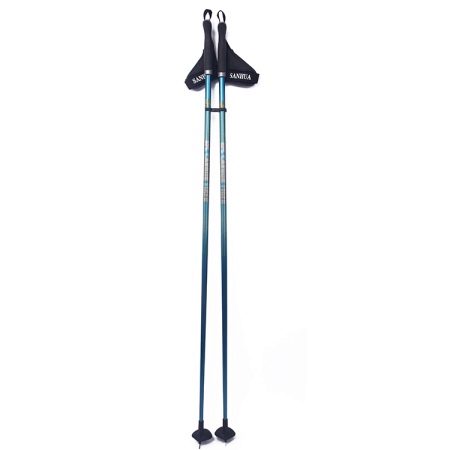
Aluminum
This is a good option when choosing between price and quality. The material is lightweight, but reliable on the go. It conducts the cold well, which makes the hands with such sticks freeze quickly, so it is recommended to insulate the palms more than usual. The sticks are tough, but bend well, the shelf life is long.
Advantages of aluminum:
- good strength;
- high level of rigidity;
- high degree of push.
Minuses:
- high price;
- high impact sensitivity.
Aluminum poles are good for beginner to intermediate skiers.
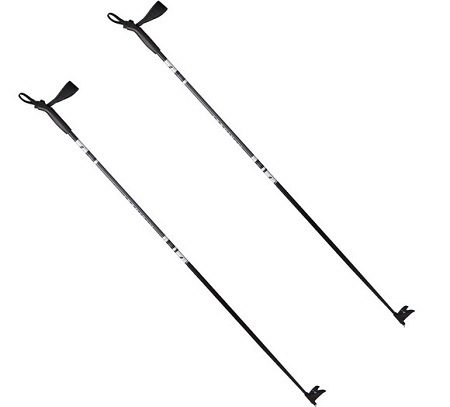
Composite
It is a combination of different materials - carbon, graphite, aluminum, resin and others. They have good flexibility, but they often break, especially in severe frosts.
Positive sides:
- flexible;
- low thermal conductivity, so hands do not freeze;
- lungs;
- low impact sensitivity;
- low cost due to the mixed composition.
Disadvantages:
- fragile;
- heterogeneous composition.
The composite absorbs energy well, so the sticks made of them are used for dynamic driving such as freeriding.

Fiberglass
It is a combination of fiberglass and plastic. Such sticks do not tolerate strong shocks, so they are used only for leisurely walks.
Advantages:
- low price;
- flexibility;
- little weight.
Disadvantages:
- high sensitivity of shocks and shocks;
- fragile;
- high conductivity of cold, that is, hands will freeze;
- low level of impact resistance.
Such sticks will not be useful for athletes, beginners will get nervous during the learning process. With these poles, it will be convenient for skiers with good riding skills who want to enjoy winter walks.
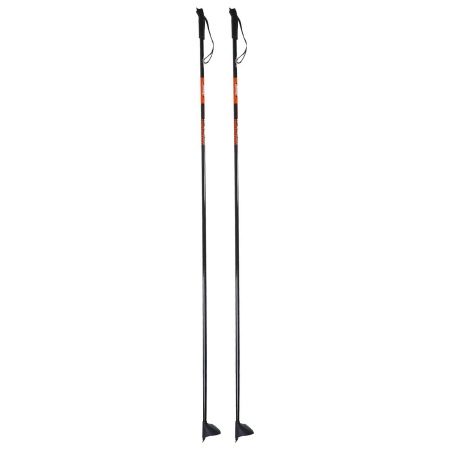
Top brands
Ski poles are produced by many manufacturers around the world. The best brands have gained popularity for their quality, unusual designs, and unique solutions.
- Exel. Finnish company that produced ski equipment back in the middle of the last century. Its products were used by athletes at Olympic competitions.
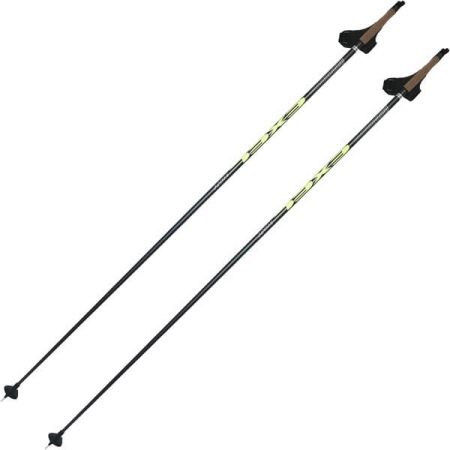
- Fischer. Large Austrian manufacturer of sports equipment. The company was founded in 1924 as a manufacturer of sleds and carts. The next year, the owner decided to start making skis. Hockey products were gradually included in production. The main production is located in Austria, the subsidiary is located in Ukraine.

- Madshus. Norwegian manufacturer of sports equipment. The production of skis began in 1924 in a barn, and has grown into large-scale production. In 1966, the company was bought by the US company K2 Sports.
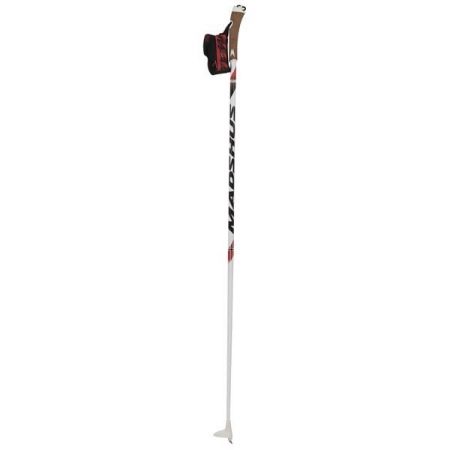
- KV +. Swiss brand, the company has been active in the ski industry since 1998. Founder - Master of Sports of the USSR Tauf Khamitov.
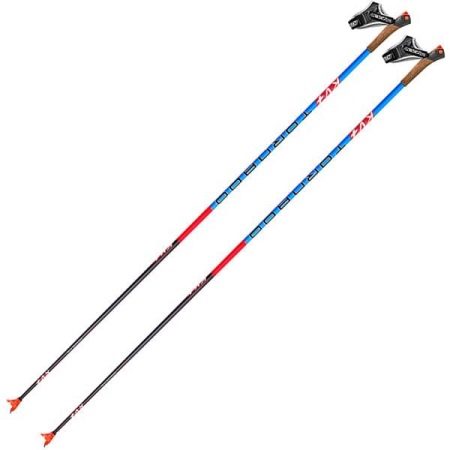
- Leki. German company established in 1948. She is known for her innovations, invented a universal system of quick release of the lanyard, a unique handle with a special glove. The ski poles of this brand are recognized as the most durable.
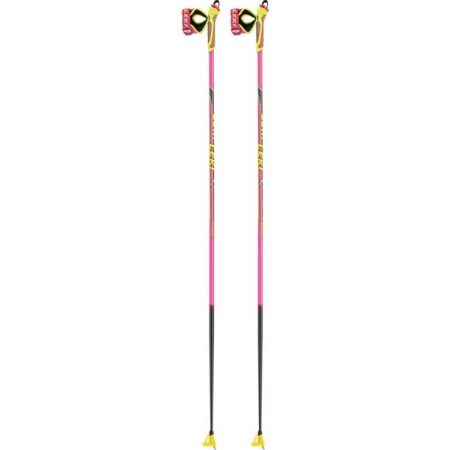
- Swix. A company from Norway that manufactures and markets cross-country skis. Well-known skiers are involved in the creation of new models, search for solutions, new materials. This helps to maintain a leading position in the sports market.
Well-known brands are constantly offering new materials, ski pole shapes, design features. These subtleties give athletes advantages in competitions, where the result is decided by fractions of a second. For ordinary people, such subtleties are not so essential.
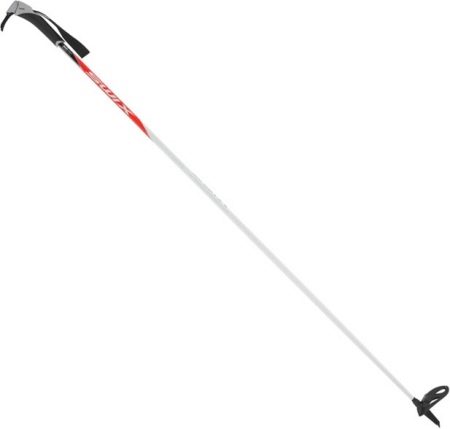
Selection rules
It is important to choose the right ski equipment. An important factor in the selection is the size. The technique of movement depends on the correct choice of sticks. Too long will load the shoulder girdle, very short will give extra load to the legs.
By height
Many methods have been developed for calculating the length of sticks. There is no universal size, because the height and weight of the skier is important. When choosing according to height, the following tips should be taken into account - with the classic movement, the sticks reach the skier up to the shoulder. For skating, the sticks should be as long as the earlobe.

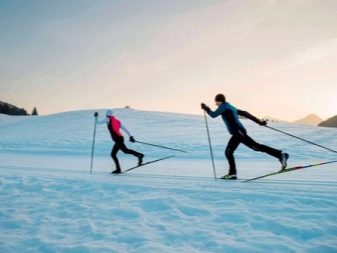
By riding style
The size of the sticks for the classic move is calculated by the formula - the height must be multiplied by 0.83. That is, 141 cm with the height of the skier 170 cm. For the skating course, the sticks are chosen as follows - the height must be multiplied by 0.9. Their length is 153 cm with the height of the skier 170 cm.
Cross-country skiing is a useful and exciting activity. To make it comfortable, to pass without injuries, you need to provide yourself with good equipment. Poles are a must for every skier. It is an art to pick them up, and it is a real pleasure to ride with good sticks. There are many manufacturers of sports equipment, a large number of recommendations for the selection.
It is imperative to have personal equipment that suits individual parameters.

